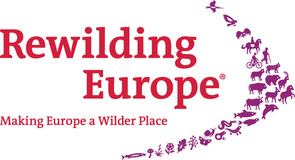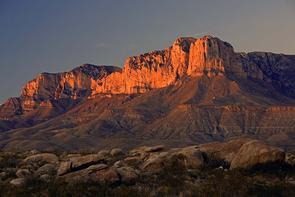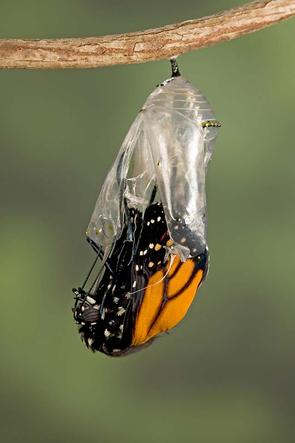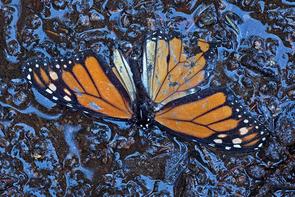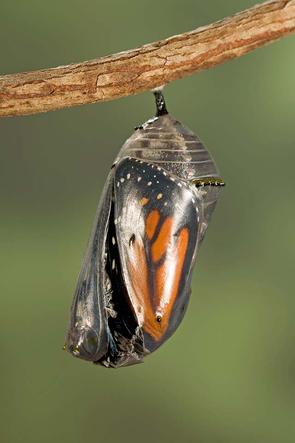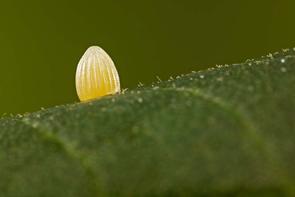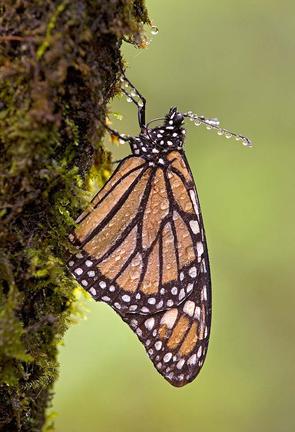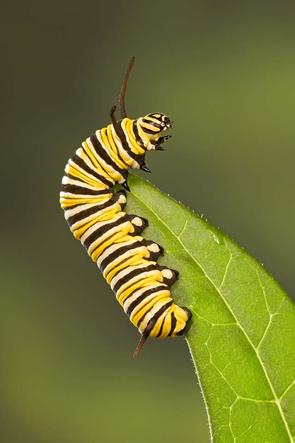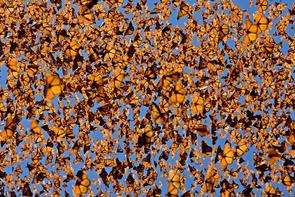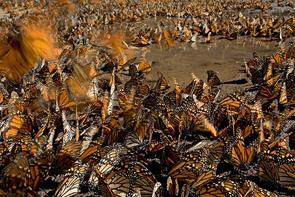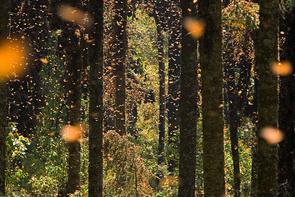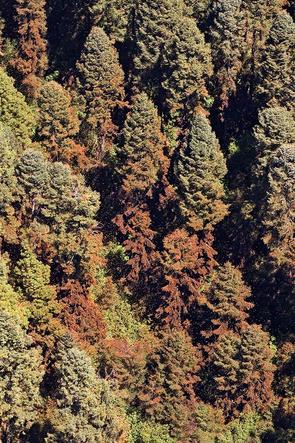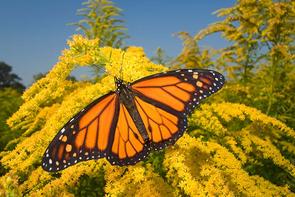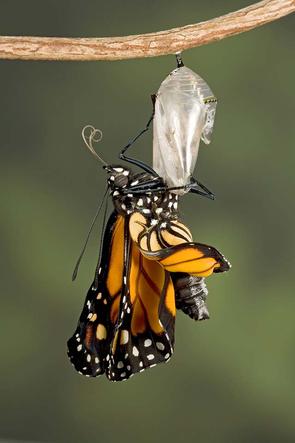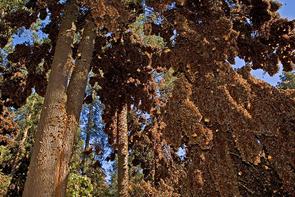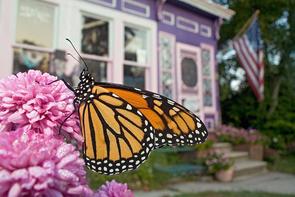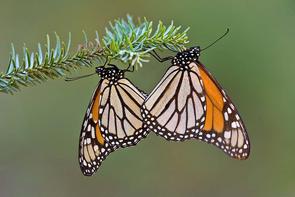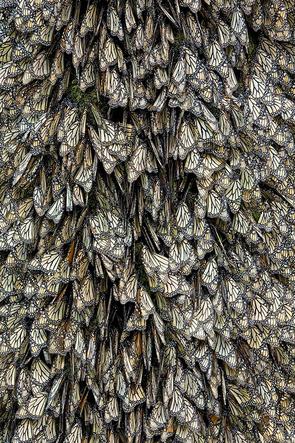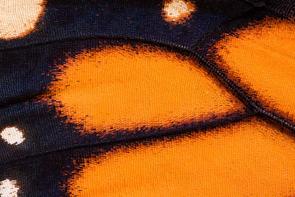Winner: Ingo Arndt - Germany
Ingo Arndt, born in Frankfurt am Main in 1968, has been working as a professional wildlife and nature photographer since 1992. His pictures have gained great recognition and are published worldwide in magazines such as GEO, National Geographic, BBC Wildlife or Terre Sauvage. On his reporting trips, he has worked on all continents of the world. On average, he spends six months a year travelling.
With his pictures, Ingo Arndt wants to arouse emotions in the viewer, make him aware of the richness of nature and thus promote nature conservation. Beyond the search for the perfect individual image, he tries to make the complex ecological relationships visible in his photography and to document the unique behavioural patterns in the animal kingdom. Since the beginning of his career, Ingo Arndt has specialised in the production of extensive photo reports.
In 2005, he won the World Press Photo award for his story on Animal Feet. His pictures won Wildlife Photographer of the Year awards in 2000, 2002, 2004, 2006 and 2007. 16 pictures by Ingo Arndt were awarded prizes at the European Wildlife Photographer of the Year. In 2006 he was awarded the German Prize for Science Photography.
He is an appointed member of the German Society for Photography (DGPH) His exhibitions are presented in many museums in Europe. His work has been reported on radio and television. Ingo Arndt has published the books Murmeltiere (1997), Tierreportagen (2002), Logbuch Polarstern (2005), Affen in der Wildnis (2007), Zeigt her eure Füße (2007), Geheime Welt der Raupen (2008) and Nomaden des Windes (2008).

Project: The Migration of Monarch Butterflies
Every year in late summer the monarch butterflies around the Great Lakes in the north of the US set off on a long trek. They have to cover almost 4 000 kilometres to reach their overwintering sites in the central highlands of Mexico. Millions and millions of these colourful butterflies gather there in the oyamel fir forests in the mountains. The cold, but dry climate is ideal for them to get through the winter. It is not before spring when temperatures rise that the monarch butterflies start off on their return journey crossing the Rio Grande to Texas and continuing northwards. It takes a few months and generations of butterflies until the delicate monarchs are back at the Great Lakes. Only a little later the last generation of the year sets out again on the great voyage towards Mexico. After several generations the great grandchildren of the overwintering generation know exactly where to go and they always find the overwintering grounds of their ancestors – up to this day it remains a mystery how they come to know their migration route.
Ingo Arndt came up with the plan to accompany the monarchs on their strenuous journey. His aim was to photograph the butterflies’ complete life cycle. From their starting point at the Great Lakes to their arrival in Mexico he followed them in several stages. He spent a number of weeks at the monarchs’ colonies in the mountain forests on more than 3 500 meters above sea level. In this way after several months he created a detailed report on the life of monarch butterflies.
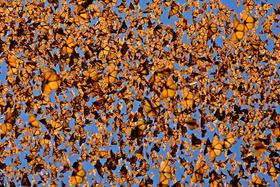
Monarch butterfly
A cloud of monarch butterflies lights up the sky above the winter quarters.
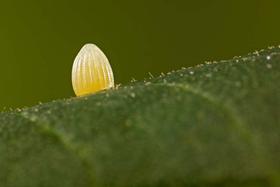 Monarch butterfly egg
Monarch butterfly egg With a length of only 1.5 mm, the monarch butterfly eggs are hardly noticeable in the vergetation. They are placed on swallow-root plants, the later food of the caterpillars
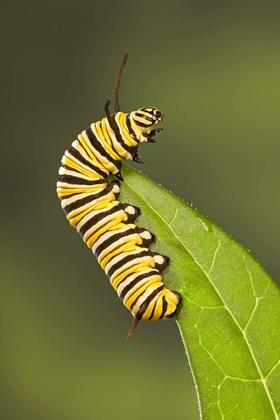 Monarch butterfly caterpillar
Monarch butterfly caterpillar The monarch's caterpillars are characterized by their warning clothing as inedible. They ingest toxins with their food, which protect them from predators.
 Monarch butterfly hatches - 1
Monarch butterfly hatches - 1 The hatching of the butterfly is a great event.
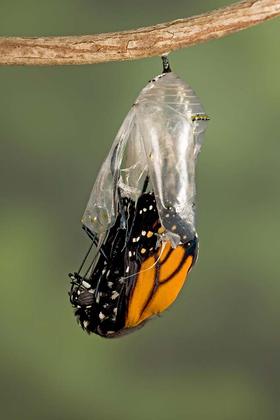 Monarch butterfly hatches - 2
Monarch butterfly hatches - 2 The entire process only takes a few minutes.
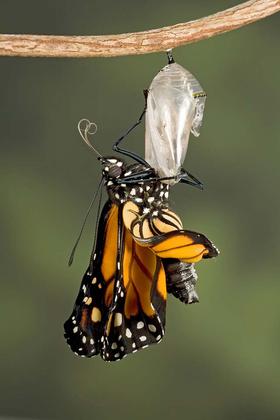 Monarch butterfly hatches - 3
Monarch butterfly hatches - 3 Only when the butterfly is completely dry, its wings carry him.
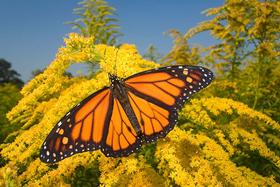
Strength food
Goldenrod nectar is one of the favorite foods of the monarch butterflies. On the way to winter quarters, the flowers of the plant are an indispensable filling station for power nutrition.
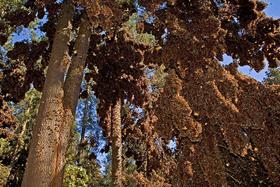
Monarch butterflies in their winter quarters in Mexico
It is estimated that up to 400 million monarch butterflies winter in the central highlands of Mexico. In the forests above 3,500 m altitude, entire trees are covered with butterflies during this time.
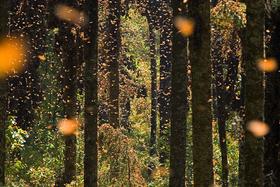
Monarch butterflies fly through the woods
If it is warm and sunny, large numbers of butterflies sometimes swarm through the forests. They take long sunbaths and look for food.
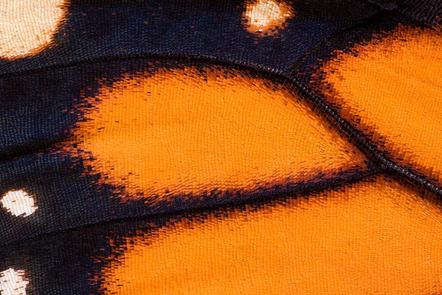
Wing detail of a monarch butterfly
When viewed from close up, the individual wing scales of the monarch butterfly are visible. Bright colors make this butterfly species one of the most popular butterflies.
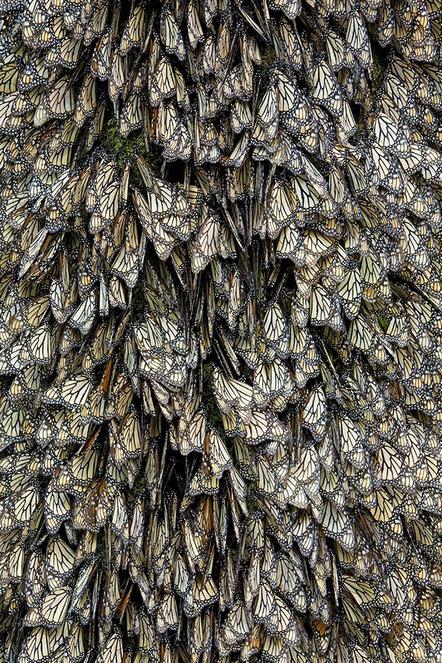
Monarch butterflies in their winter quarters in Mexico - 2
During the night and on cool days, many of the colony's tree trunks are covered with dormant butterflies. With their wings folded, they sometimes wait days for better weather.
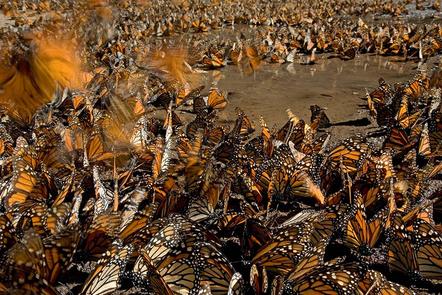
Water point in winter quarters
During longer periods of drought, the butterflies go to the remaining water points in huge numbers to quench their thirst.
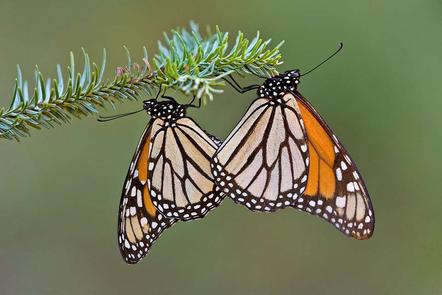
Mating at the end of wintering
The mating season is at the end of winter. The sperm transferred to the female are stored and only serve to fertilize the eggs on the way back to the summer quarters.
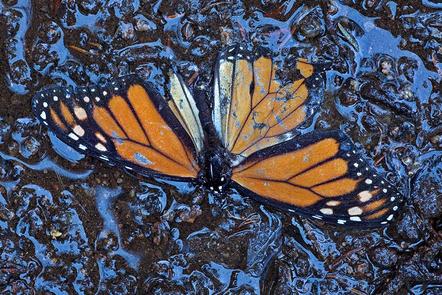
Dying monarch butterfly
Not all monarch butterflies survive the exhausting winter weeks in the Mexican mountains. Many animals are too weak and die before they can start their return journey.









